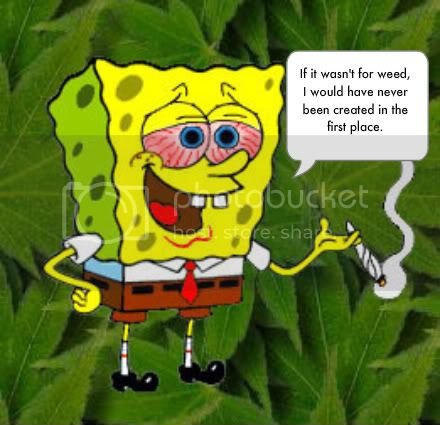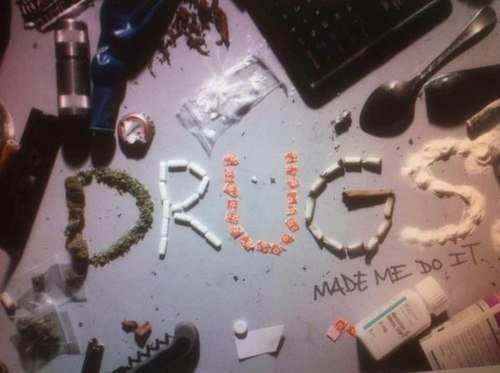Hello friends, this is my first publication on the health label and well, I want to start big, today I will start with an article, where some basic concepts of psychoactive substances will be defined, which are established as chemical substances ( drugs or psychotropic drugs) of natural or synthetic origin that affect the functions of the central nervous system (CNS), that is, the brain and the spinal cord. Among its effects, we can find the inhibition of pain, the change of mood, the alteration of perception, and so on. I invite you to observe this interesting post. !!! :):)

Although drugs are associated with therapeutic and medicinal use, drugs are often considered recreational. The latter tend to relate to young people, but in reality they are consumed by people of very different profiles and of different ages.
Psychoactive substances are very versatile and have a wide repertoire of effects. It should be noted that some psychoactive substances are considered drugs and psychotropic drugs. One example is the Xyrem, which as medical use can be used for the treatment of narcolepsy, but in leisure circuits it is called liquid ecstasy or GHB.
Psychoactive substances: their beginnings
Psychoactive substances have not only been used by modern man, but have been consumed for thousands of years. In fact, there are discoveries that indicate that they have been consumed since 3000 BC. The data suggest that opioids were already taken at that time. Later, it is known that the Aztecs made use of peyote and some shamans of hallucinogenic substances.
How psychoactive substances are classified

In the following lines we have made a classification of psychoactive substances differentiating the psychotropic drugs.
Types of psychotropic drugs
There is a great variety of psychotropic drugs and, therefore, they can be classified in different ways. None of the categories listed below are better than the rest, but we have taken into account the functionality or usefulness of each group of psychotropic drugs.
1 . Neuroleptics and antipsychotics
They are psychotropic drugs that are used to treat psychotic crises. Some of these drugs have potent side effects, and often consume them, for example, patients with schizophrenia or paranoid disorder. Among the best known are haloperidol or olanzapine.
2 . Anxiolytics and Hypnotic-sedatives
Anxiety disorders are one of the most frequent reasons for psychological consultation, so these psychotropic drugs are also the most used. Some of these drugs, which are included in this classification, are used as sedatives to facilitate sleep. We can highlight the diazepam (valium) or the tranquimazin.
3 . Antidepressants
They are the psychotropic drugs used to treat depression, and they tend to increase the presence of serotonin, noradrenaline or dopamine in the brain thanks to different actions. For example, by inhibiting the reuptake enzymes. Highlights, among others, fluoxetine (or prozac) or sertraline.

4 . Mood stabilizers / Eutimizers
This type of psychotropic drugs are psychoactive substances that are used in the case in which a patient suffers bipolar disorder, in this way, it is possible to stabilize the mood and keep it stable. We can highlight lithium salts or carbamazepine.
Types of drugs
Drugs also have different effects and can be classified in several ways. They are the following.
According to its legality
According to their legality, drugs can be classified into:
- Legal drugs: are those that are allowed by the law of a country. These laws can change from one country to another. In Spain, alcohol or tobacco are legal drugs.
- Illegal drugs: are those that their consumption is not allowed in a country. In Spain, for example, we can talk about cocaine or ecstasy. The drug traffickers are responsible for marketing this type of substance, one of the best known was Pablo Escobar. You can read his biography in our article: "Biography and personality of Pablo Escobar, the irreducible narco"
According to how they are consumed
Drugs can be consumed in different ways. But what are they?
- Smoked: tobacco, hashish or "crack" are some examples.
- Oral route: ecstasy, alcohol, LSD
- Inspired: speed, cocaine streaks.
- Inhaled: glue, popper.
- Injected: heroin.
According to its effect on the central nervous system (CNS)
According to its effects, drugs can be classified in the following ways:
- Depressants of the nervous system: They produce an inhibitory effect on some functions of the central nervous system. Alcohol, hypnotics (sleeping pills or barbiturates), anxiolytics such as benzodiazepines, opiates (heroin, morphine, methadone, etc.) or tranquilizers belong to this group.
Stimulants of the nervous system: They produce an opposite effect to the previous ones and are exciting drugs, which provoke sensation of energy and stimulation of the waking state. Amphetamines, nicotine, cocaine or caffeine belong to this group. Psychedelic or disturbing substances: These are substances that cause hallucinations and exaggerated changes in perception. The best known are: LSD, mescaline, ketamine and MDMA.
Drug use is very widespread today, and the variety of these is very remarkable. Some of these drugs are natural, produced by nature itself. Others, the synthetic ones, follow a series of chemical processes for their creation. The immediacy of its effects has to do with the rapidity in which the active principle passes into the blood. Generally, injectable drugs are the ones that cause the most rapid effects, and also the most addictive ones.
References
http://www.nt.gov.au/health/healthdev/health_promotion/bushbook/volume2/chap1/sect1.htm.
- "Will Your Retirement Home Have A Liquor License?" Forbes 26 December 2013.
- Nelson, Max (2005). The Barbarian's Beverage: A History of Beer in Ancient Europe. Abingdon, Oxon: Routledge. p. 1. . Retrieved 21 September 2010.
- Merlin, M.D (2003). "Archaeological Evidence for the Tradition of Psychoactive Plant Use in the Old World". Economic Botany. 57 (3): 295-323.
- Early Holocene coca chewing in northern Peru Volume: 84 Number: 326 Page: 939-953
- "Coca leaves first chewed 8,000 years ago, says research". BBC News December 2, 2010.
- Siegel, Ronald K (2005). Intoxication: The Universal Drive for Mind-Altering Substances. Park Street Press, Rochester, Vermont.
- Weil, Andrew (2004). The Natural Mind: A Revolutionary Approach to the Drug Problem (Revised edition). Houghton Mifflin. p. fifteen.
- The Hashish Eater (1857) pg. 181
- Albert, David Bruce, Jr. (1993). "Event Horizons of the Psyche". Retrieved February 2, 2006.
https://steemit.com/spanish/@ralfm/el-origami-un-arte-para-una-mente-fuerte-y-con-gran-determinacion
Very good didactic and entertaining information by the addition of sponge Bob calls a lot of attention! a greeting